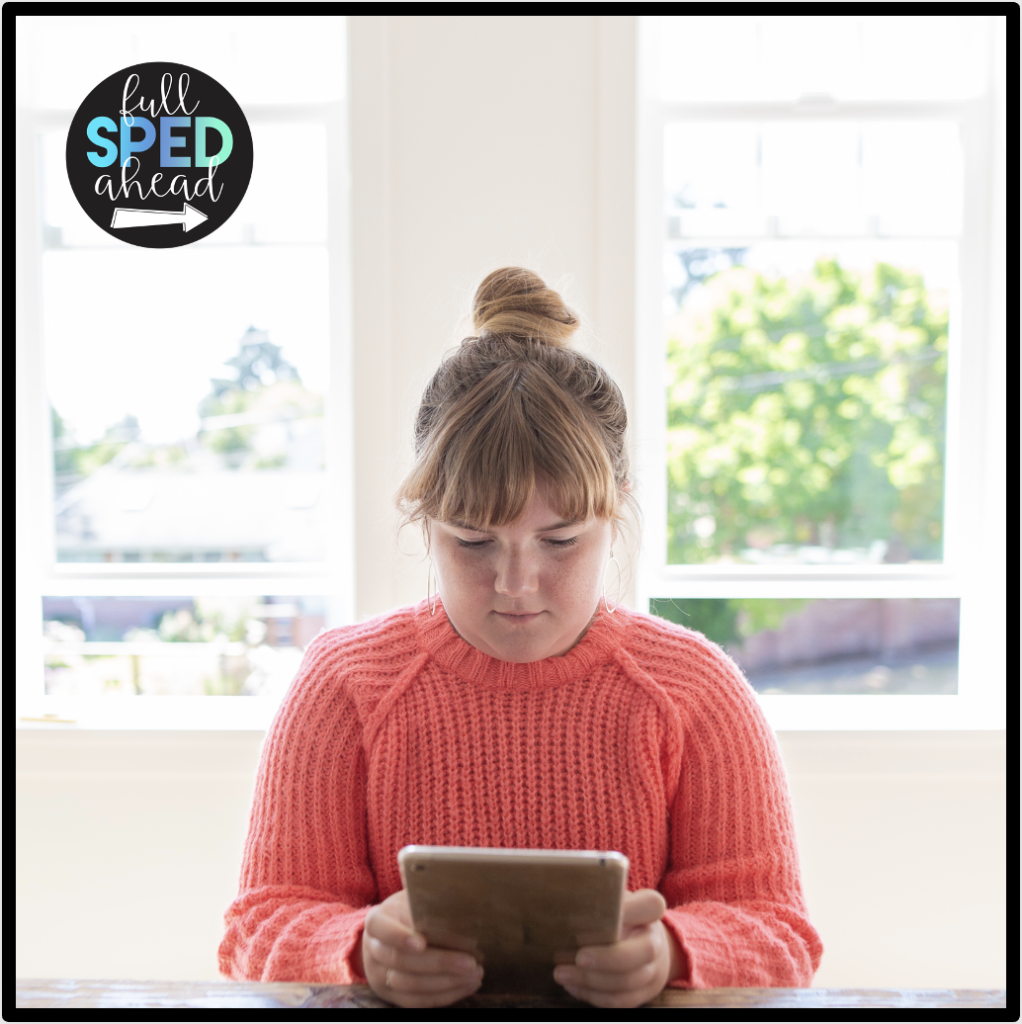Meeting the individual needs of every student in your classroom can be a daunting task for teachers. Each student needs differentiated instruction to access the curriculum. So what is differentiated instruction?
Want to learn more about N2Y planning? Read this blog post

Differentiated instruction means to tailor instruction to meet the needs of each individual student. Differentiation benefits students across the learning continuum, including students who are highly able and gifted.
It is important that differentiated instruction is used to meet the students where they are at and continue to give them the confidence they need to excel through the lessons and units. The teacher provides tools or resources that students need to be most successful.
I really enjoy the variety of levels and supports that come with n2y’s Unique Learning System. This curriculum has made it easier to have differentiated instruction by supporting students that are working on picture recognition, sight word reading, and all the way through reading paragraphs. Comprehension skills are also differentiated in such a way that all students can access the lesson and monthly units and be successful in their own personal goals.
This is why teaching with differentiation is so important. We want ALL of our students to succeed at similar paces and we, as teachers, need to give students the accommodation that they truly need to access the material.
Teachers who differentiate effectively need to pinpoint what students currently know, what they are ready to learn next, and when.
Data tells teachers to plan a variety of learning pathways so that all students can be successful. Student data can also identify gaps in knowledge and skills that can be used for learning interventions.
I use Unique Learning System to track data on Reading and Mathematics content and knowledge. Each skill can be monitored through a benchmarking system within the leveled and differentiated instruction. This leveled benchmarking helps teachers make educational decisions about the levels and supports that their students need.
Data sources aren’t always just numbers and grades. Sometimes, data will include observations in the classroom, formative assessments, and feedback from students and their parents or caregivers. Throughout all of this data tracking, a teacher will be able to make appropriate decisions on how to use differentiated instruction.

You can differentiate instruction across four main areas: content, process, product, and environment. To differentiate content, teachers consider the objective of a lesson, then provide students with flexible options about the content they study to meet the objective.
With process differentiated instruction, teachers differentiate how students learn. Students are getting levels of support based on what they need. Another is varying the way concepts are taught: through visual, auditory, or kinesthetic lessons. n2y has a leveled system where students are grouped into Level 1, Level 2, or Level 3 based on their unique abilities – it makes grouping students so easy!
Product differentiation are the types of assignments students create. For example, a teacher might ask students to explain a concept, but the final product could be a written report, a story, a song, a speech, or an art project. Allowing choices empowers students to use their strengths and interests to show mastery of a skill!
Varying the types of assessments you give students is also an example of product differentiation. Within its programming, n2y has a variety of assessment tools that allow students to copy and paste answers, circle the correct answer, fill in the blank, or match. This allows differentiation for many students to access similar reading materials and show their comprehension at their individual levels.
Let’s not forget about the classroom environment: it also affects learning! Changing physical things in the classroom, like how desks are set up or arranged, or where students can sit, serves as classroom environment differentiation. Consider changing things up for your students by using flexible seating or sit/stand desks.
When in a reading class, a teacher may use a variety of leveled readers to help support all the students in the classroom. Meeting the students at their reading level helps all the students access the curriculum at their own pace and ability. N2Y has a comprehensive leveled reader library of nonfiction and fiction books that pair well with grade-level standards. This has been an easy way that I have provided differentiation to her caseload of students.
Total Solutions – Differentiated instructional system
Unique Learning System – designed specifically to help students with special learning needs master their state’s extended standards
Polaris – Collaborative system for IEP development and implementation
Through differentiated instruction, all students have been able to excel in many classrooms around the world. Accommodation gives people the tools they need to be successful and reach their full potential at their own pace. Let’s continue to make the world a better place by allowing all to access the materials they need at their own level!
Looking to learn more about differentiation? Read this post.
Instagram | TeachersPayTeachers | Facebook | Boom Learning Library
What are you looking for?

COPYRIGHT © 2024 Full SPED Ahead